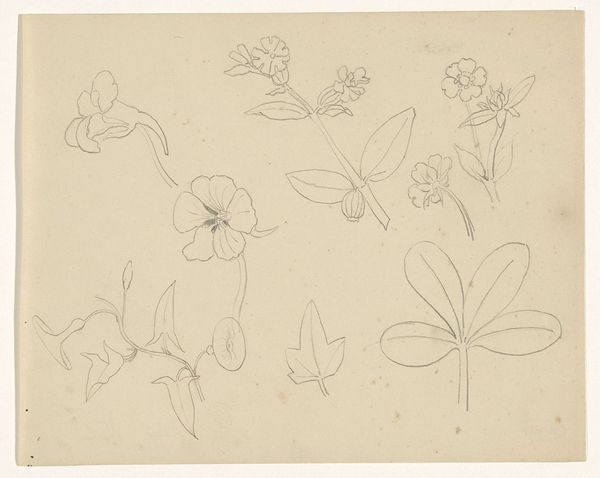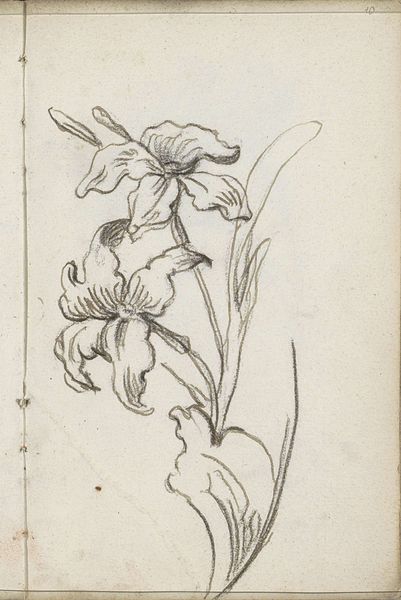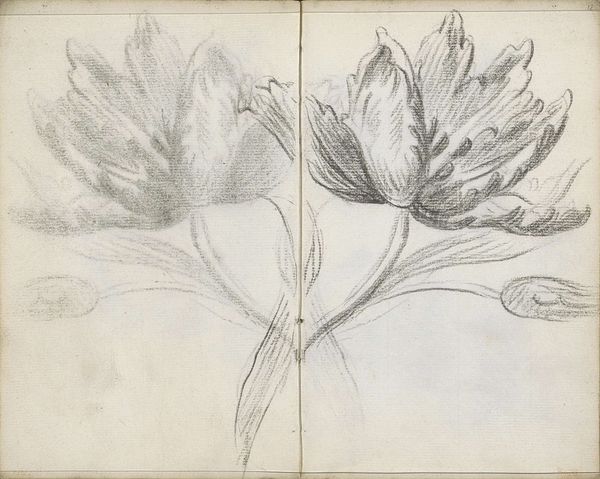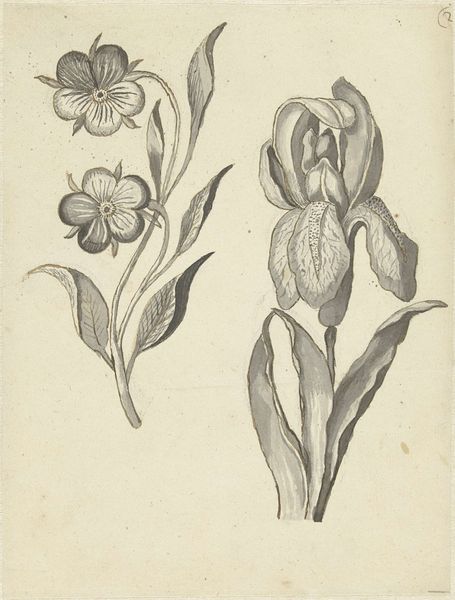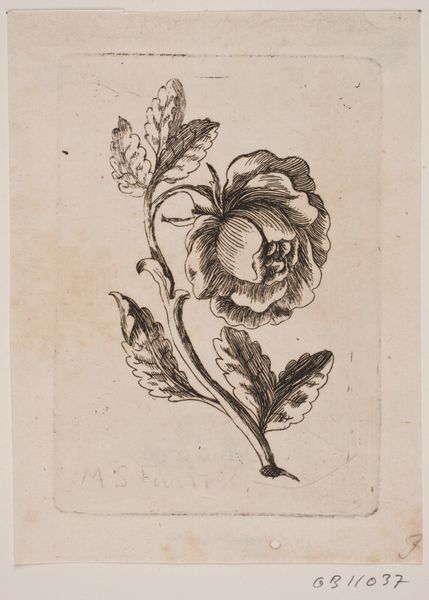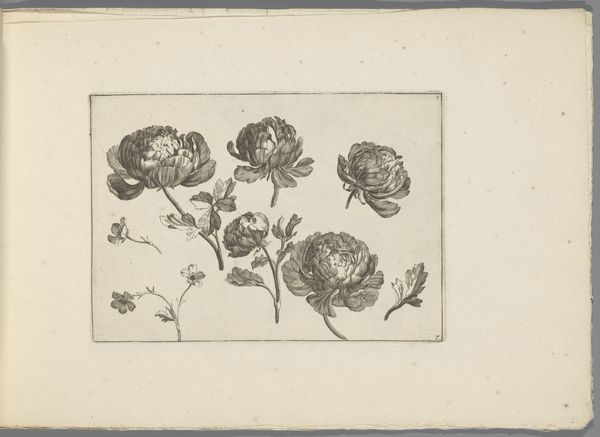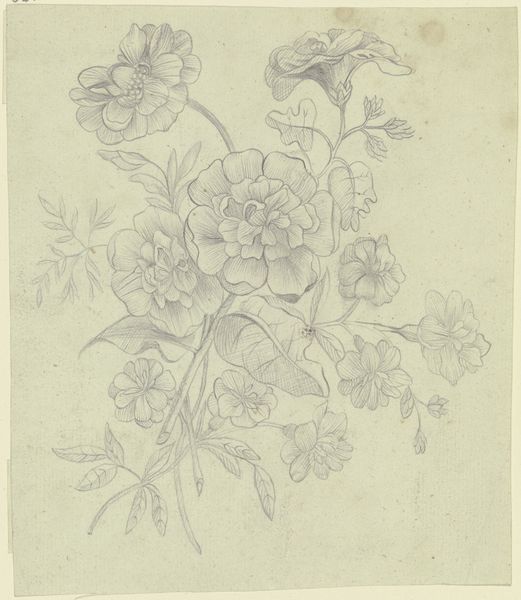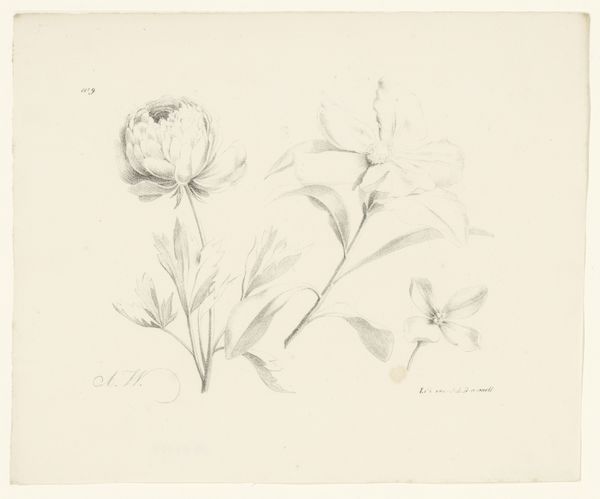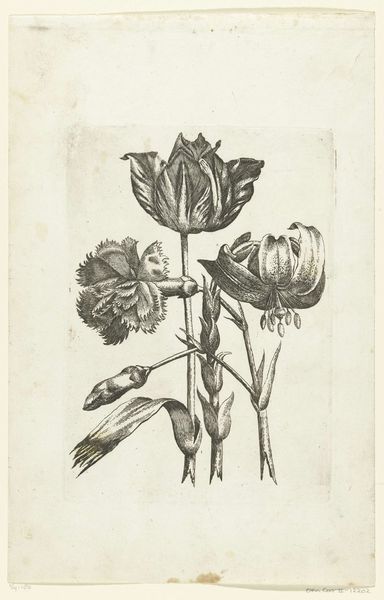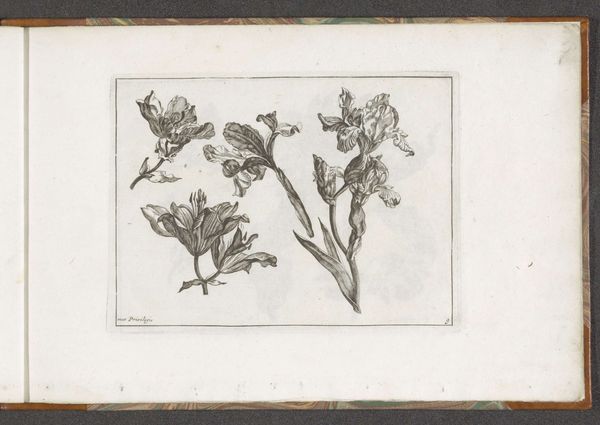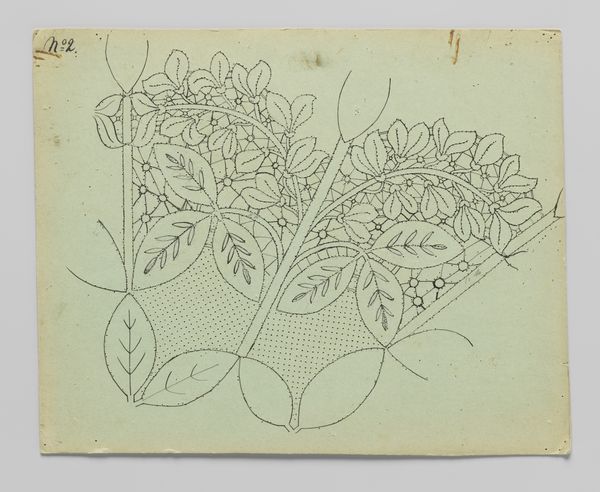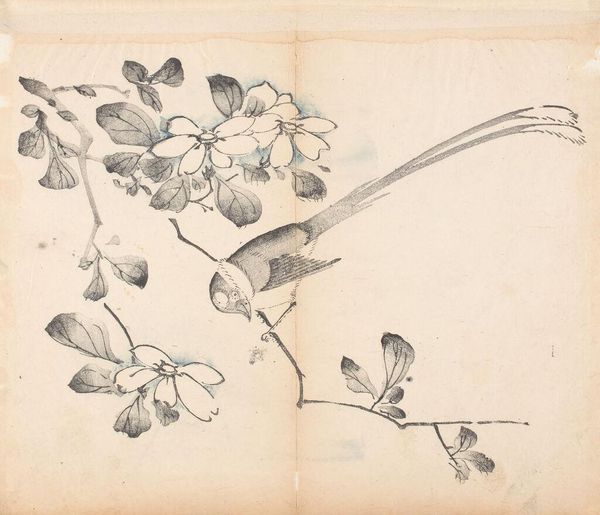
drawing, pencil
#
drawing
#
pen sketch
#
pencil
#
academic-art
Dimensions: height 156 mm, width 205 mm
Copyright: Rijks Museum: Open Domain
Curator: At first glance, there’s a quiet serenity to this work. Almost austere, even in its depiction of flowers. Editor: That’s a wonderful observation. What we have here is "Studieblad met een roos en een ranonkel (?)," or “Study Sheet with a Rose and a Buttercup (?)”, made sometime between 1683 and 1733. It is currently held here at the Rijksmuseum. The artist, Bernard Picart, used pencil and pen to create this lovely drawing. Curator: The rose, particularly, carries such weight. We associate it with love, passion, and even secrecy—think of "sub rosa," beneath the rose. Yet, in this sketch, its presentation is quite subdued, wouldn’t you agree? Editor: Indeed. The delicate strokes seem to whisper, not shout. During this period, flower studies gained prominence. They served not only as artistic exercises but also as scientific records, and the development of printmaking allowed their circulation to a wider audience. This piece, I think, straddles that line, balancing artistic beauty with a botanical curiosity. Curator: It’s interesting that you mention its scientific role. Even the format hints at that function—a study sheet of flowers, where academic art merged with the budding interest in botany and classification. How intriguing to see art playing a role in cataloging the natural world! Editor: Absolutely! There's something poignant about these sketches surviving across centuries. We glimpse Picart's close study, the precise lines attempting to capture nature’s fleeting beauty. Roses have appeared in religious art too. Curator: True, as symbols of the Virgin Mary. But here, it feels stripped down, doesn't it? The focus shifts away from pure allegory toward something more observational, less burdened by symbolism and more intent on observing reality. Editor: Ultimately, it is about layers isn't it? We, today, bring all the associations we have of art’s societal roles. Picart brings the tools that shaped how his contemporaries saw and engaged with the image. A subtle dialogue across centuries. Curator: Precisely, these sketches serve as an art historical lesson in evolving viewership of artwork! Editor: And, of the endless ability for imagery to remain ever so poignant.
Comments
No comments
Be the first to comment and join the conversation on the ultimate creative platform.
